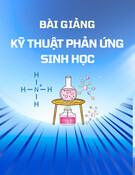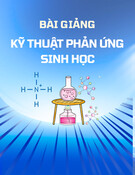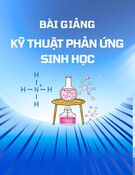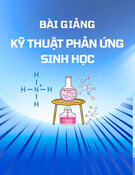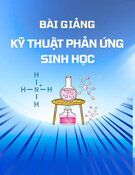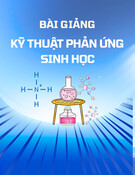
* Corresponding author.
E-mail address: waseemahmad8@gmail.com (W. Ahmad)
© 2020 Growing Science Ltd. All rights reserved.
doi: 10.5267/j.ccl.2019.10.001
Current Chemistry Letters 9 (2020) 105–112
Contents lists available at GrowingScience
Current Chemistry Letters
homepage: www.GrowingScience.com
Preliminary phytochemical, antimicrobial and photochemical study of Calotropis
gigantea leaf extract
Waseem Ahmada*
aOrganic Chemistry Section, Department of Chemistry, Uttaranchal University, Dehradun 248001, India
C H R O N I C L E A B S T R A C T
Article history:
Received August 4, 2019
Received in revised form
August 30, 2019
Accepted September 27, 2019
Available online
Septembe
r
28, 2019
Several Plant products have been found to be a part of phytomedicines since time immemorial.
These plant products can be derived from barks, leaves, flowers, roots, fruits, and seeds. It has
been found that the light radiation affects the antimicrobial activity of herbal products. The
present study was aimed to investigate the phytochemical screening and antimicrobial
activities of Calotropis gigantea leaf extracts. In addition to these studies we also check the
effect of UV light radiation on the anti microbial activity of leaf extract. Phytochemical
screening revealed the presence of various active phytochemicals in the extracts of aerial part
of Calotropis gigantea. Ethanol, chloroform and hexane extract of leaves were tested against
Clostridium botulinum, Proteus vulgaris, Escherichia coli and Arthrographis cuboid,
Aspergillus fumigatus, Aspergillus niger by the agar disc diffusion method. The antimicrobial
activity of the extracts generally reduces significantly after exposure to the UV radiations.
© 2020 Growin
g
Science Ltd. All ri
g
hts reserved.
Keywords:
Phytochemical
Photochemical
Antibacterial activity
Antifungal activity
Calotropis gigantea
1. Introduction
Medicinal plants have been found to be the best source to obtain a variety of drugs. Medicinal plants
produce bioactive compounds such as tannins, terpenoids, alkaloids, and flavanoids which have been
proved in vitro to show anti microbial properties.1-4 The medicinal properties of plants may be based
on the antioxidant, antimicrobial, antipyretic activity of the extract of different parts of the plant which
is the consequences of the bioactive compound present in them.5 The ability of herbal plants to
synthesize a wide variety of chemical compounds has an important biological functions for example a
defendence against attack from predators such as insects, fungi and herbivorous.6 The abundance of
plants on the earth’s surface has led to an increasing interest in the investigation of different extracts
obtained from traditional medicinal plants, as potential source of new antimicrobial agents.7-9
Calotropis gigantea is one of the important herbal plants which are helpful in the treatment of
various diseases of human being.10 Calotropis gigantea is a species of flowering plant within the family
of Apocynaceae that is local to North Africa, Tropical Africa, Western Asia, South Asia, and
Indochina.11 Calotropis gigantea has an anti-inflammatory activity. Its natural cleansing and astringent

106
properties help in early healing of the wound, itching and healing skin diseases and spleen disorders.12-
15 It is a digestive stimulant which eases out the digestive process making each and every organ function
smoothly.16 It improves appetite which is combating anorexia and disinterest in eating meals. Nearby
utility of this herb is very popularly utilized in Ayurvedic remedy practice to therapy hemorrhoids. It
enables in shrinking hemorrhoid tags with its study alkaline movement.17 As a kapha pacifying herb, it
allows in wholesome working of the respiration system, supporting in diseases like cough, cold,
bronchial asthma and different similar breathing problems.18
The major challenges in herbal medicines are determining the overall quality, stability and
efficiency of the herbal product. It is well known that the majority of herbal remedies are sensitive to
the light and it has been reported that extracts of herbal plant may undergo photodegradation reactions
on exposure to UV light. The aim of this study was therefore to evaluate the phytochemical and
antimicrobial activity of calotropis gigantea leaf extract in addition to these studies we also check the
effect of light irradiation on the antimicrobial activity of ethanolic leaf extract of Calotropis gigantea.
2. Materials and methods
2.1 Plant Collection and Authentication
The medicinal plant was collected from the Vikasnagar in Dehradun. The plant collected was identified
botanically in department of Botany, F.R.I. The leaves and flowers of the selected plant were removed
from the plants and then washed under running fresh water to remove dust. The plant was dried for a
few days in the presence of sunlight after drying the plant material was crushed in a crusher and
converted into powered form and stored into polythene bags before usage.
2.2 Preparation of plant extracts
Solvent extraction
Crude plant extract was prepared by Soxhlet extraction method. About 25 g of powdered plant
material (leaves) was uniformly packed into a thimble and extracted with 250 ml of different solvent
(ethanol, chloroform, and hexane). All the extracts were evaporated using rotary evaporator and the
percentage yield was thus recorded. Dried extracts were stored in airtight containers for further studies.
Concentrated extracts were subjected to various chemical tests in order to detect the various
phytoconstituents.
3. Phytochemical Analysis
The concentrated extract of selected plant was subjected to different chemical tests for the detection
of different phytoconstituents using standard methods.
3.1 Test for alkaloids
Crude extract was dissolved in 2 mL of 1% HCl and heated gently. Wagner’s and Meyers reagents
were added to the mixture. Turbidity of the resulting precipitate was taken as confirmation for the
presence of alkaloids.19
3.2 Test for flavonoid
Crude extract when mixed with 10 mL distilled water; 5 mL of dilute ammonia solution were added
to a portion of the aqueous filtrate solution then added 1 mL concentrated sulphuric acid. Indication of
yellow color shows the presence of flavonoid.20

W. Ahmad / Current Chemistry Letters 9 (2020)
107
3.3 Test for terpenoids
Crude extract when mixed in 2 mL of chloroform and 3 mL of concentrated H2SO4 was added and
mixed properly in selected sample extract. A reddish brown color was formed, the presence of
terpenoids.21
3.4 Test for saponins
Crude extract when mixed with 5 mL distilled water in a test tube then it was shaken briskly. The
formation of stable foam which indicate the presence of saponins.22
3.5 Test for carbohydrate
2 mL of Fehling A and Fehling B reagents were mixed together in equal volume. These reagents are
added in crude extract and gently boiled. The bottom of the test tube a brick red precipitate is appeared
and indicate the presence of reducing compounds.23
3.6 Test for tannins
Crude extract was mixed with water and heated on water bath. The mixture was filtered and ferric
chloride was added to the filtrate. A dark green solution indicates the presence of tannins.24
4. Bacterial culture
The bacterial strain such as Proteus vulgaris, Escherichia coli and Clostridium botulinum were
obtained from culture collection center department of biotechnology of Uttaranchal University,
Dehradun and were maintained in Mueller Hinton agar at 4 ºC for experiment studies. The different
fungus strains such as Aspergillus niger, Arthrographis cuboid and Aspergillus fumigatus were isolated
from potato dextrose agar.
5. Preparation of standard culture inoculums of test organism
The colonies of selected bacterial and fungal strains as mentioned in materials and methods were
inoculated in the 50 mL nutrient broth and incubated for 24-72 h.25
6. Assay of anti-bacterial activity
Assay of anti-bacterial activity of leaf extract of Calotropis gigantea was done by Disc Diffusion
method.26In this method 20 mL of sterilized Mueller Hinton Agar was poured into sterile petri plates,
after solidification, 120 μL of bacterial culture poured on the plates and the culture was spread on plates
using spreader. Then, the Whatmans filter paper discs (6 mm in diameter) were kept over the agar plates
using sterile forceps at various concentrations. Concentrated solvent was used as negative control. The
anti-bacterial assay plates were kept incubator, where all the plates were incubated at 37 ºC for 24 h.
The diameter of inhibition zone was noted down.
7. Assay of anti-fungal activity
Assay of anti-fungal activity of leaves extract of Calotropis gigantea was done by Disc Diffusion
method .26 In this method 20 mL of sterilized Mueller Hinton Agar was poured into sterile Petri plates,
after solidification, 100 µL of fungus culture poured on the plates and the culture was spread on plates
using spreader. Then, the Whatmans filter paper discs (6 mm in diameter) were kept over the agar plates
using sterile forceps at various concentrations. Concentrated solvent was used as negative control. The

108
anti-fungus assay plates were kept incubator, where all the plates were incubated at 37 ºC for 24 h. The
diameter of inhibition zone was noted down.
8. Photo irradiation
The leaves extracts of Calotropis gigantea at a concentration of 1 mg/mL were prepared in the
following solvents: ethanol, chloroform and hexane. Ethanol chloroform and hexane solution of the
extract were irradiated with a mercury arc lamp with radiant energy at wavelength of 254 nm and
emission power 8W/cm2 W/cm2 for limited time period of about 4h. Antimicrobial activity of samples
against the microorganism was evaluated after the period of irradiation.
9. Result and Discussion
Plants are playing vital role in having beneficial therapeutic effects in traditional Indian system of
medicine. Studies on medicinal plants are gaining consensus in recent years in India and Abroad. In the
present study, different leaf extract of calotropis gigantea were subjected to qualitative phytochemical
analysis to explore its anti microbial activity for its medicinal applications.
The percentage yields of extracts and the phytochemical constituents of the plants are shown in
Table 1 and Table 2, respectively. The highest yield of leaves extract was found when extraction was
done with ethanol and the lowest in case of hexane. This is most probably due to change in the polarity
of solvents. Ethanol is the highest and hexane is the lowest polar solvent.
Table 1. The Yield of extract with different solvent (%)
Table 2. Preliminary phytochemical analysis of different leaves extract of calotropis gigantea
Phytochemical
constituents
Ethanol Chloroform Hexane
Alkaloids +
(
10.04 m
g
/mL
)
+
(
9.5 m
g
/mL
)
_
Flavonoides +(11.2 mg/mL) + (10.2 mg/mL) +(9.3 mg/mL)
Terpenoids + (9.2 mg/mL) + (8.01 mg/mL) _
Tannins
_
+
(
8.5 m
g
/mL
)
_
Sa
p
onins +
(
7.8 m
g
/mL
)
_
_
Carboh
y
drates +
(
6.5 m
g
/mL
)
+
(
5.4 m
g
/mL
)
_
+ indicates presence of phytochemicals - = indicates absence of phytochemicals.
The result of the preliminary phytochemical screeing of different leaves extract of Calotropis
gigantea shows in Table 2. The present study reveals that the phytochemical screening and qualitative
estimation of leaves extract of Calotropis gigantea showed the presence of alkaloid, flavanoid, tannin,
terpenoid and carbohyrate in choroform. In ethanolic extract of leaves alkaloid, flavanoid, sponins,
carbohydrate and terpenoids are present.In the hexane extract of leaves only flavonoid is presnt.
9.1 Antibacterial activity
Result of the antibacterial activity of the isolated extract by using different solvent (ethanol,
chloroform, and hexane) was showed in table 3. The dried leaves extract of Calotropis gigantea shown
to posses’ antibacterial activity. The antibacterial activity of ethanol, chloroform and hexane of extract
Plant Sample Ethanol Extract
(%)
Chloroform Extract
(%)
Hexane Extract
(%)
Leaves 17.94 13.5 8.5

W. Ahmad / Current Chemistry Letters 9 (2020)
109
of leaves of Calotropis gigantea were inspected against the selected experiment pathogens such as
Proteus vulgaris, Clostridium and Escherichia Coli by disc diffusion method. The tested microbial
organism shows varying degree of antibacterial activities in examined plant extract. The ethanol leaf
extract of Calotropis gigantea showed the maximum zone of inhibition against in Clostridium
botulinum (35 mm) which is gram positive bacteria and cause food poisoning, pneumonia and brain
abscess. The hexane extract of leaves extract of Calotropis gigantea showed minimum zone of
inhibition against Proteus vulgaris (13 mm).
Table 3. The growth-inhibitory diameters (mm) of different extracts against the tested bacteria
Microorganisms
Leaves Extract
(
zone of inhibition in mm
)
Ethanol Ethanol
(
control
)
Chloroform Chloroform
(
control
)
Hexane
Clostridium botulinum 35 34 28 26 24
E
scherichia coli 31 28 22 20 14
Proteus vul
g
aris 26 24 17 16 13
Fig. 1. The growth-inhibitory diameters (mm) of different extracts against the tested bacteria
9.2 Antifungal activity
Antifungal activity is that anything that kills fungi or inhibits their growth or control of fungi
infection. Antifungal is used to treat infection caused by a fungus. Antifungal drugs include amphoterin,
griseofulvin, the lesimidazo, nystatin, teebinafine and tolnaftate. Result of the antifungal activity of the
isolated extract by using different solvent (ethanol, chloroform, and hexane) was showed in Table 4.
The antifungal activity of ethanol, chloroform and hexane of extract of dried leaves of Calotropis
gigantea were inspected against the selected experiment pathogens such as Arthrographis cuboid,
Aspergillus fumigatus and Aspergillus niger by disc diffusion method. The ethanol leaf extract of
Calotropis gigantea showed the maximum zone of inhibition against in Arthrographis cuboid (38 mm).
The hexane extract of leaves extract of Calotropis gigantea showed minimum zone of inhibition
againest Aspergillus niger (12 mm). Minimum Inhibitory Concentration (MIC) of Calotropis gigantean
was also determined and the result was shown in Table 5.
Ethanol Chloroform Hexane
Clostridium 35 28 24
E-coli 31 22 14
Vulgaris 26 17 13
Clostridium
E-coli
Vulgaris

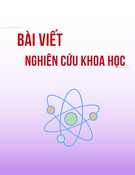

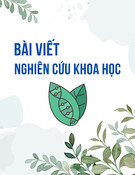


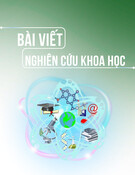


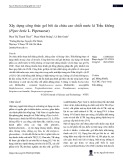

![Hướng dẫn giải chi tiết bài tập phân li, phân li độc lập: Tài liệu [mới nhất]](https://cdn.tailieu.vn/images/document/thumbnail/2025/20251204/lethu2868@gmail.com/135x160/84711764814448.jpg)



![Bài tập Đa dạng thế giới sống [kèm đáp án/ hướng dẫn giải]](https://cdn.tailieu.vn/images/document/thumbnail/2025/20251123/thaohoang9203@gmail.com/135x160/5861763951302.jpg)
